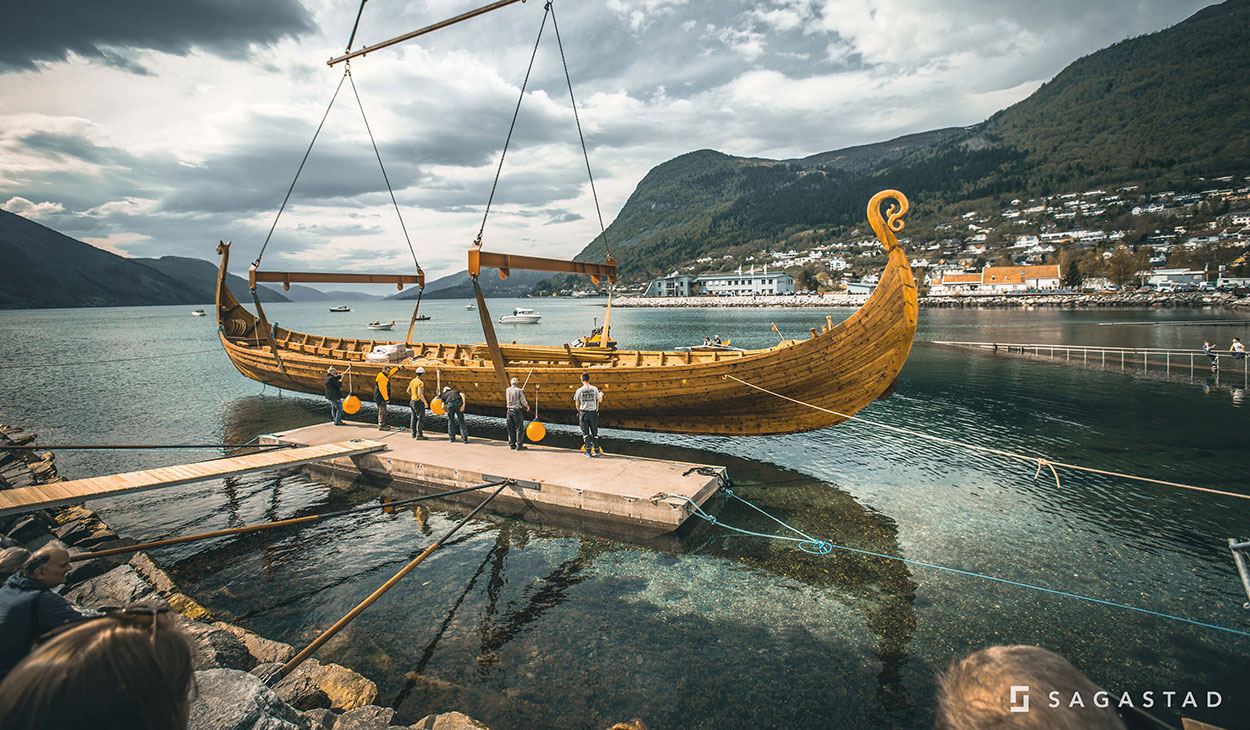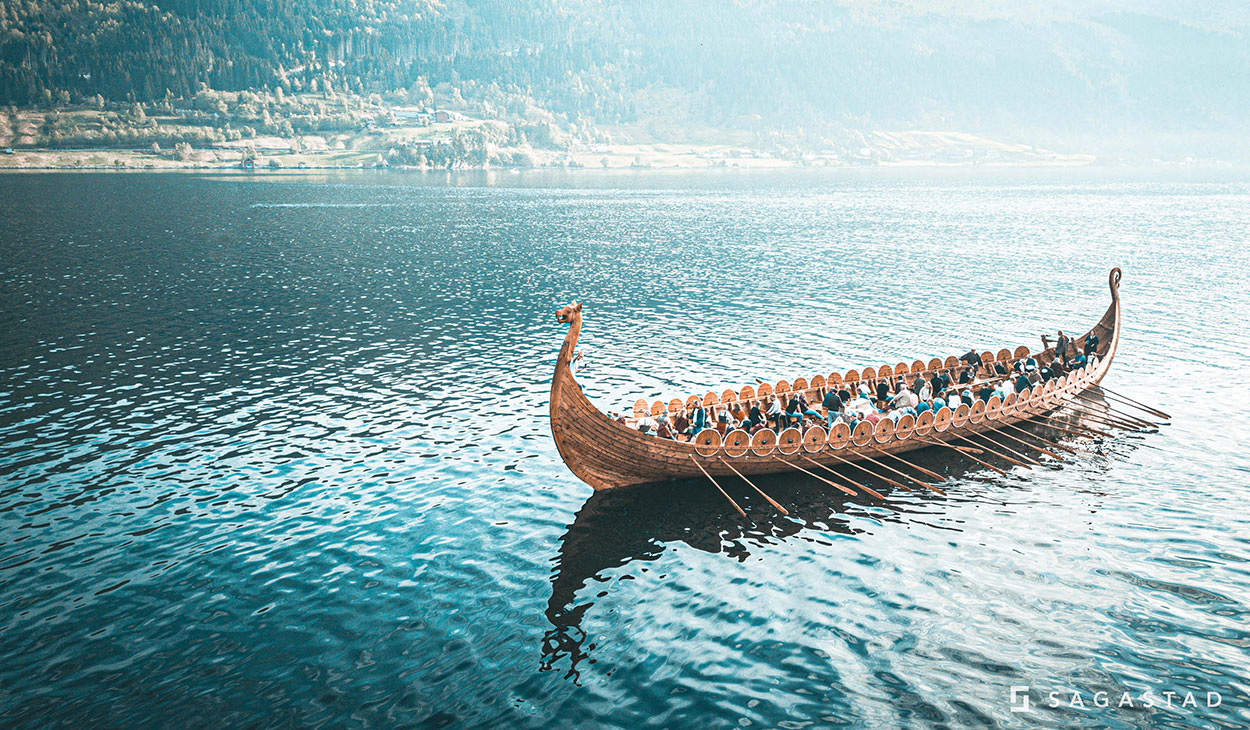The Myklebust Ship
The Myklebust ship is the largest Viking ship that has been found in Norway. It was found in a burial mound in Nordfjordeid in 1874, but has since been forgotten by many. Now the ship has risen from the ashes only a few meters from the fjord where it first sailed for over 1000 years ago.
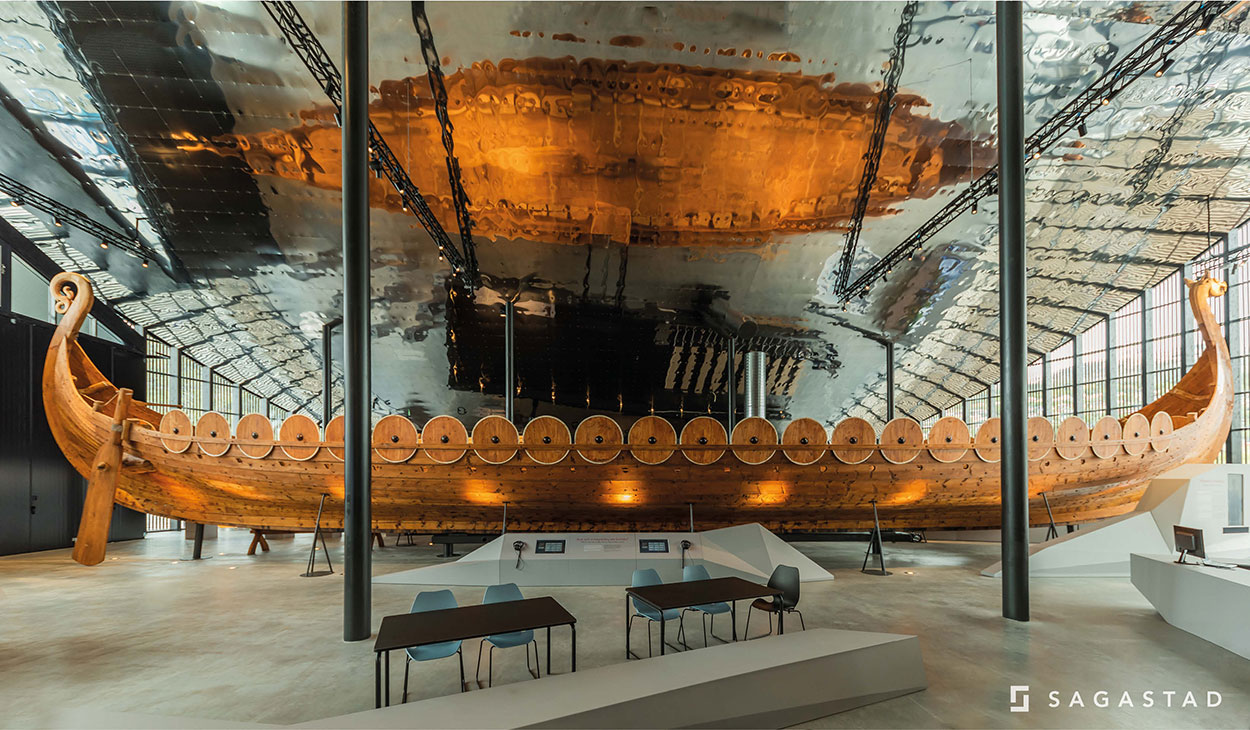
- Full length 30m / 100ft
- Width 6m
- Height in the trunk Approx. 7m
- Number of oars 24 pairs
- Numbers of shields 48
- Number of rivets / nails approx. 7000 pcs
- Number of wooden nails Approx. 700
- Estimated weight Approx. 16 tonnes
The mound with the huge ship
The young archaeologist Anders Lorange came to Nordfjordeid from Bergen in 1874 to investigate the large burial mound that is locally called “Rundehågjen” or “Lisje Skjoratippen”. The mound stands on Myklebustgarden, a farm which used to houses 5 burial mounds. But this very mound turned out to be special.
The mound was about 30 meters in diameter, was almost 4 meters tall, and had a wide moat around it. The mound contained the remains of a fantastic Viking ship and a number of high-status objects from the end of the ninth century. The sumptuous burial remains in the mound and traces of the mysterious rituals performed at the burial, provided a fascinating insight into the way of life and worldview of the Norse society that lived in Nordfjordeid more than a thousand years ago.
The ship in the mound was named Myklebustskipet, after the farm name where it was found. Unfortunately, the ship came in the shadow of the Viking ships that were found some years later: the Gokstad ship in 1880 and the Oseberg ship in 1904. The reason was that the Gokstad ship and the Oseberg ship were found intact, while the Myklebust ship had been burned during the burial. There was therefore not much to see of the Myklebust ship. But the burial mound contained traces of a proud past for the ship and the buried one. This story is the focus of Sagastad in the new knowledge center.
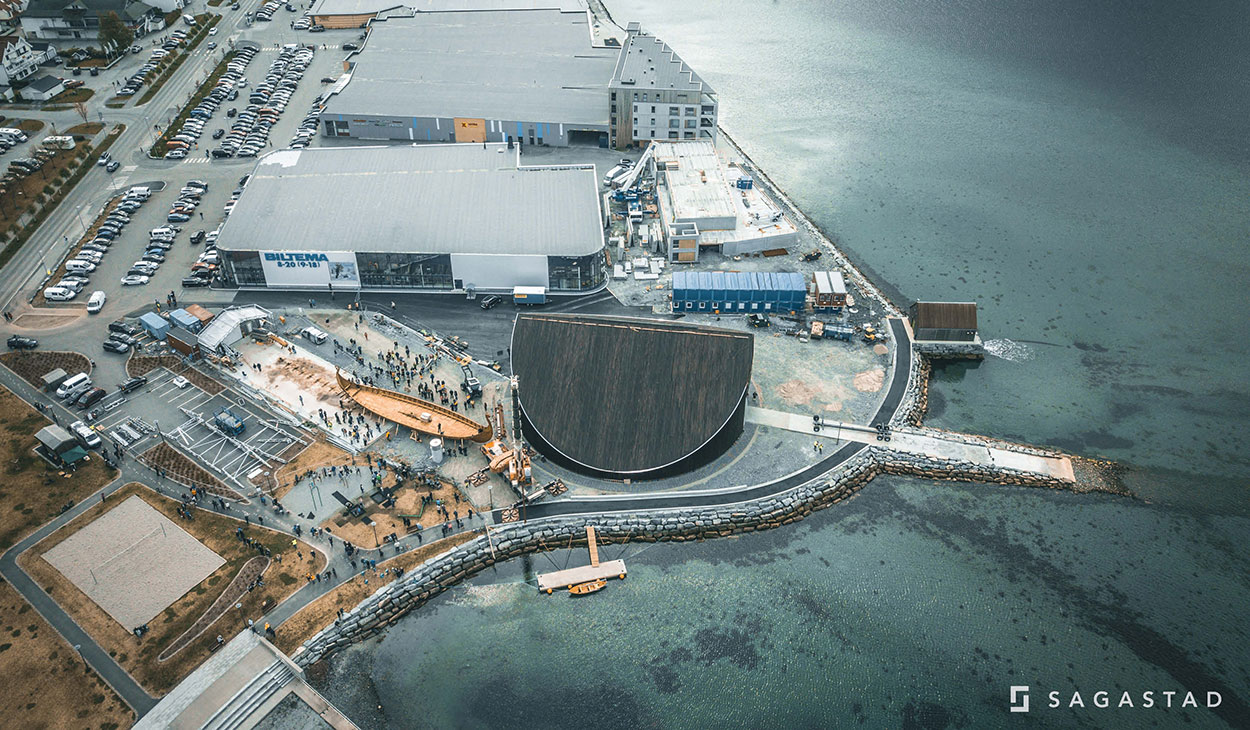
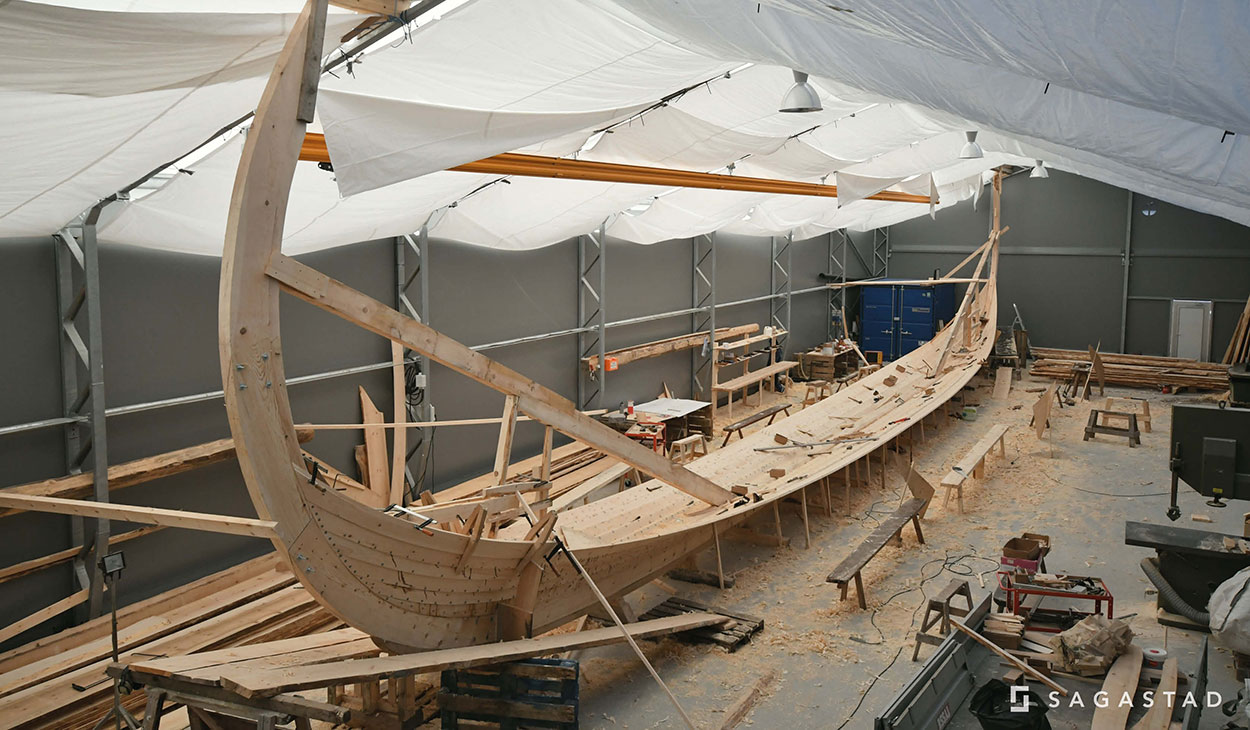
A royal ship
The size of the ship is known on the basis of several finds: the first is the number of rivets and nails (at least 7000), and the size of these. The size varied according to which part of the ship it had belonged to and the length told how thick the hull of the ship must have been. The second is the large amount of ash in the pile. The ash layer extended to both edges of the mound, and in the middle there were a double layer, separated by a layer of sand. The other layer may have been the burned remains of the ends of the ship, thrown into the middle before the mound was built over the grave. The third is the number of shield bosses in the grave. A total of 44 shield bosses were found, something that is believed to represent the crew of the ship. This number is counted as a minimum number as the grave was only halfway excavated. The shields would probably be placed along the rows on the ship, and therefore gives us a picture of the length of the ship. Based on these points, the estimated length of the Myklebust ship is 30 meters (100ft). This is an enormous size, larger than both the Oseberg ship and the Gokstad ship.
In Viking times, there were different ways to bury a person, but mounded ship graves were reserved for only the richest and most powerful persons. This is also evidenced by the objects in the grave. With him, the dead man had been given a full set of weapons, jewellery, game pieces and most beautiful of all was a Celtic bronze vessel that housed the burnt bone remains. All this indicates that the deceased had been a rich man, one who was central to society – probably a Viking king. The Myklebust ship can be counted as a royal ship – a ship worthy of the last voyage to Valhalla.
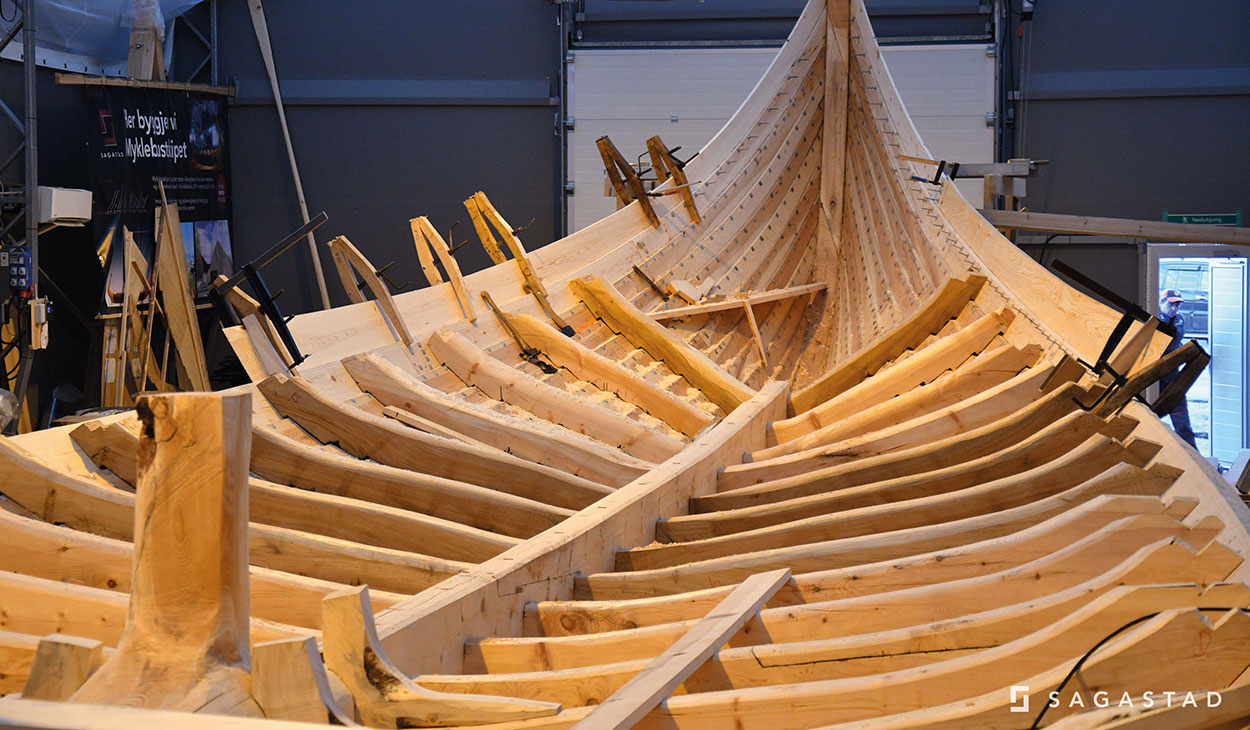
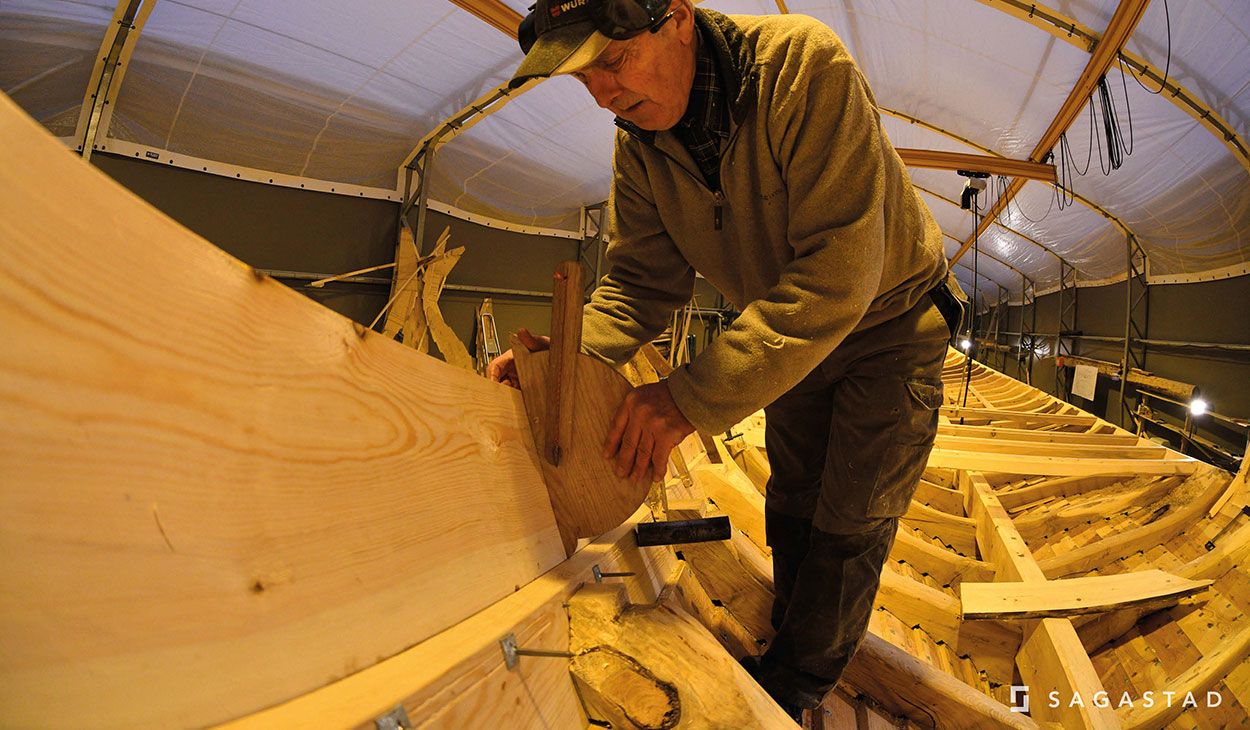
The reconstruction of the Myklebust ship
In the autumn of 2016, a new Viking history was written in Nordfjordeid and Bjørkedalen in western Norway. After planning since the early 90s, the plans for a center that show the finds and history from the Viking Age in Nordfjordeid is beginning to be realized. Skilled and experienced boat builders from Bjørkedalen started the work of reconstructing the Myklebust ship, how we believe it may have originally looked. Bjørkedalen is a town that has long traditions in boat building, traditions that can be traced back to the Viking Age and have probably existed even longer. Access to good forest has meant that every farm had their own ship building yard in Bjørkedalen, and to this day Viking ships and other wooden boats are being built there. The boat builders, with their living tradition, therefore played a crucial role in realizing the Myklebust ship.
As a royal ship, the Myklebust ship has been a symbol of power and must have been richly decorated with carvings. The head and tail of the new ship were carved by Master Carver Rolf Taraldset from Hornindal. Sagastad has a goal of further decorating the ship with carvings both in the trunk and aft. The work will be possible for the public to follow at given times.
The ship was completed and launched on the fjord in the spring of 2019. It is a ship with good maneuvering properties, and lies elegantly on the sea. The ship is prepared to be able to mount the mast and rig, and it is planned to rig the ship with a sail in the future. Sagastad aims to launch the ship at special occations, for rowing trips and in time also sailing trips on the fjord. For the most of the time however, the ship is safely stored as the most important part of the exhibition in Sagastad, and is equipped with a gangway to welcome our guests on board.
